Demo center skis jsou odolné lyže vhodné k zapůjčení, které si můžete vyzkoušet před koupí. Retail skis jsou vysoce výkonné, personalizované možnosti pro vážné lyžaře. A Snowfeet*? Jsou to kompaktní, snadno použitelné mini skis, které se zbavují objemu tradiční výbavy. Tady je rozpis:
- Demo skis: Odolné pro půjčovny, nastavitelné vázání, vhodné pro vyzkoušení, ale ne pro vlastnictví.
- Retail skis: Přizpůsobitelné, vysoce kvalitní a specializované, ale drahé a vyžadují údržbu.
- Snowfeet*: Cenově dostupné, přenosné a vhodné pro začátečníky, skvělé pro nenáročnou zábavu na sněhu.
Rychlé srovnání:
| Vlastnost | Demo lyže | Maloobchodní lyže | Snowfeet* |
|---|---|---|---|
| Cena | Střední náklady na půjčení | Vysoké počáteční náklady | $150–$690 |
| Potřebné boty | Lyžařské boty | Lyžařské boty | Běžné nebo lyžařské boty |
| Přenosnost | Objemné | Objemné | Přátelské k batohu |
| Terén | Upravené sjezdovky | Specializované tratě | Sjezdovky, stezky, parky |
| Křivka učení | Střední | Vysoká | Snadné |
Takže ať už testujete, investujete, nebo si jen užíváte zábavu, existuje možnost pro každého. :)
1. Demo lyže z půjčovny
Konstrukce a odolnost
Demo lyže z půjčovny jsou vyrobeny tak, aby zvládly opotřebení častým používáním. Mají extra ochranné nátěry a zesílené hrany, aby odolaly častým úpravám vázání a náročnému lyžování. Tyto lyže jsou navrženy tak, aby vydržely nespočet půjčovacích cyklů během sezóny. Jejich skluznice také dostávají speciální úpravy, které je chrání před škrábanci a rýhami, přičemž stále zajišťují hladký skluz.
Vázání a nastavitelnost
Vázání na demo lyžích je navrženo s ohledem na efektivitu půjčoven. Mají nastavitelné systémy, které rychle pojmou širokou škálu velikostí bot. Drážky a vizuální průvodci usnadňují nastavení, ale tato pohodlnost může mít malou daň – vyvýšené vázání může snížit přilnavost hran při ostrých, agresivních zatáčkách.
Výkon a použití
Demo lyže jsou navrženy pro spolehlivý all-mountain výkon spíše než pro ostrou přesnost. Obvykle mají vyváženou pružnost a all-mountain profil, což je činí solidní volbou pro středně pokročilé až pokročilé lyžaře. Jejich velikosti však často odpovídají průměrnému lyžaři, což nemusí být ideální pro ty, kteří spadají mimo typický výškový rozsah.
Cena a dostupnost
Demo lyže jsou ideální pro zážitek "vyzkoušejte před koupí" a jsou navrženy pro vysoce frekventované půjčovny. Po vyřazení z půjčoven jsou často prodávány se slevou kvůli viditelnému opotřebení. Nicméně oblíbené modely mohou být během vrcholných období nedostatkové, takže rezervace předem je chytrý krok. I když představují kompromis mezi odolností a výkonem, tento kompromis vytváří základ pro pozdější srovnání s produkty Snowfeet*.
2. Maloobchodní lyže
Konstrukce a odolnost
Maloobchodní lyže jsou vyráběny s důrazem na přesnost a dlouhou životnost. Značky jako Rossignol, Salomon a K2 se zaměřují na výrobu lyží, které poskytují výkon přizpůsobený specifickým stylům lyžování. Tyto lyže obvykle obsahují lehké jádra vyrobená z materiálů jako topol, uhlíkové vlákno nebo pěna. Výsledek? Lyže, které jsou jak citlivé, tak snadno ovladatelné, nabízející rovnováhu mezi flexibilitou a sníženou hmotností.
Tato pozornost k detailu zajišťuje vlastnosti jako ostřejší držení hran a plynulejší zahájení zatáčky, díky čemuž jsou tyto lyže skvělou volbou pro lyžaře, kteří si cení přesnosti. Navíc design umožňuje nastavení vázání, které lze přizpůsobit individuálním výkonovým potřebám.
Vázání a nastavitelnost
Většina maloobchodních lyží se prodává bez vázání, což lyžařům dává svobodu vybrat si systém, který nejlépe vyhovuje jejich botám a stylu lyžování. Když je vázání profesionálně namontováno, sedí níže na lyži, což zlepšuje kontakt hrany a kontrolu – zejména ve srovnání s demo lyžařskými sestavami. Toto vlastní montování zvyšuje přenos síly z boty na lyži, což nabízí přesnější kontrolu, zejména pro agresivní nebo závodní lyžování.
Výkon a použití
Maloobchodní lyže jsou účelově stavěné pro konkrétní lyžařské disciplíny. Například:
- All-Mountain Skis: Skvělé pro univerzálnost, zvládají kombinaci upravených tratí a lehkého terénu mimo sjezdovky.
- Racing Skis: Navrženy pro sportovce, kteří potřebují přesnost a rychlost na tvrdém sněhu.
- Powder Skis: Mají širší profily a rocker designy, vynikají v hlubokém sněhu.
Zatímco tato specializace zvyšuje výkon v jejich určených podmínkách, může je učinit méně odpouštějícími pro začátečníky nebo v situacích mimo jejich navržený účel. To kontrastuje s širší univerzálností demo lyží, které jsou často přizpůsobivější různým podmínkám.
Cena a dostupnost
Maloobchodní lyže mají vyšší počáteční cenu, zvláště pokud započítáte kvalitní vázání. Pro lyžaře, kteří tráví hodně času na svazích, se však investice vyplatí. Tyto lyže lze ladit, přizpůsobovat a udržovat po mnoho let, což nabízí konzistentní výkon, který půjčované nebo demo vybavení nemůže nabídnout. Zatímco maloobchodní lyže poskytují specializovaný výkon, alternativy jako Snowfeet* nabízejí kompaktnější a univerzálnější možnost pro ty, kteří hledají něco jiného.
NeKupujte použité půjčované nebo demo lyže, dokud neuvidíte toto video!
sbb-itb-17ade95
3. Snowfeet* Skiblades a Skiskates
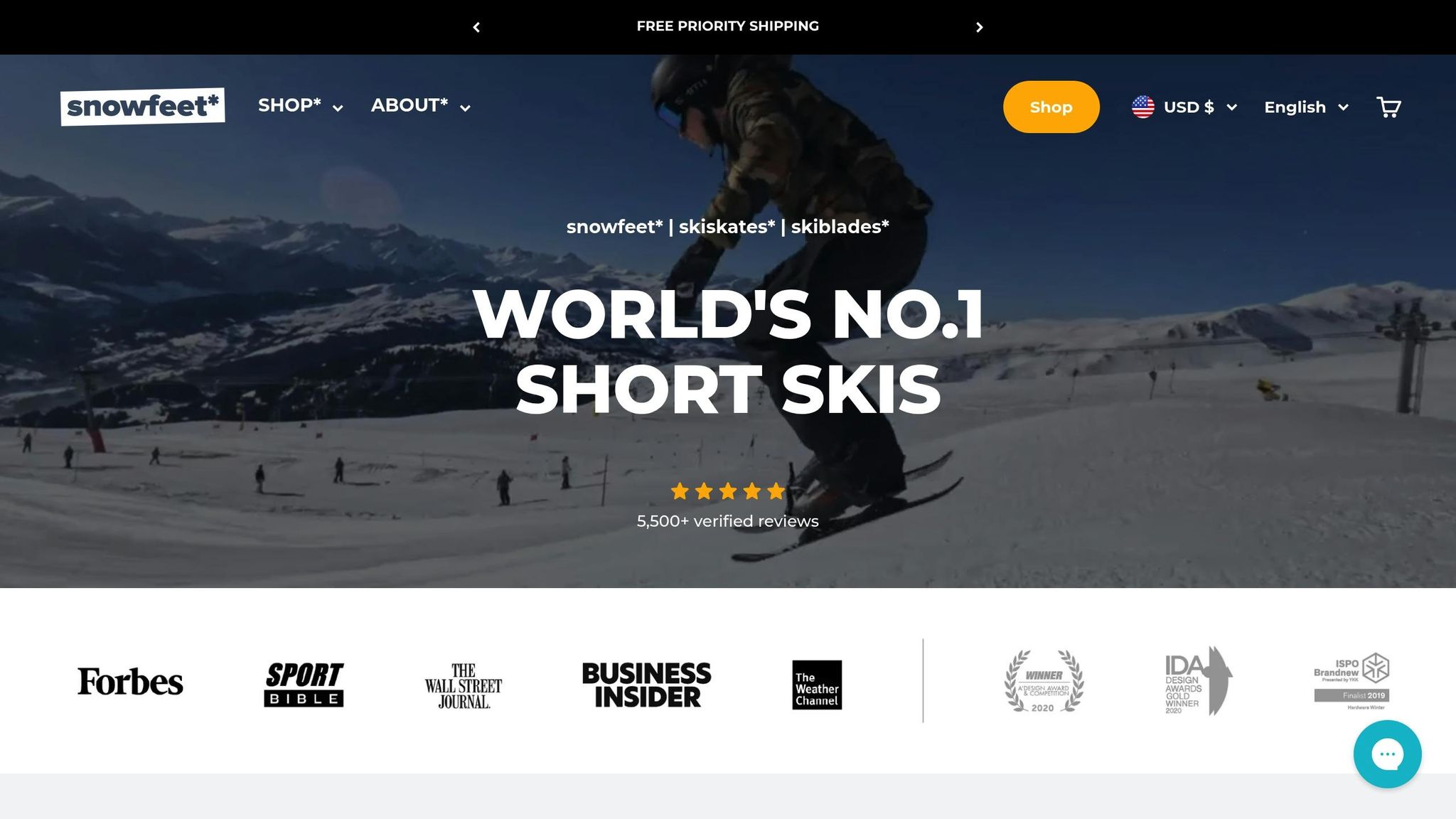
Snowfeet* přináší osvěžující obrat do zimních sportů, vzdaluje se od tradičních demo nebo maloobchodních lyží s více univerzálním a kompaktním přístupem.
Konstrukce a odolnost
Produkty Snowfeet* jsou stavěné na dlouhou životnost a přicházejí ve třech unikátních kategoriích, z nichž každá má své designové výhody. Skiskates (44 cm) mají cap konstrukci s dřevěným jádrem, kovové hrany a grafitové skluznice pro rychlost. Jsou ručně vyráběné v Evropě z certifikovaného udržitelného dřeva, což zaručuje kvalitu a výkon.
Mini Skis (38 cm) jdou jinou cestou, používají materiály vyztužené skelným vláknem a kovové hrany. Díky tomu jsou odolnější než běžné demo lyže, přitom lehké a snadno ovladatelné.
Pro ty, kteří hledají něco trochu robustnějšího, přicházejí Skiblades ve třech délkách: 65 cm, 99 cm a 120 cm. Stejně jako Skiskates jsou ručně vyráběné z certifikovaného udržitelného dřeva a mají cap konstrukci, kovové hrany a grafitové skluznice. Delší modely (99 cm a 120 cm) jsou zhotoveny konstrukčními technikami podobnými klasickým lyžím, nabízející rovnováhu mezi odolností a kompaktní praktičností.
Vázání a nastavitelnost
Zapomeňte na starosti s profesionálním montováním nebo nastavováním DIN. Produkty Snowfeet* jsou připravené k použití hned po vybalení. Mini Skis jsou navrženy tak, aby fungovaly s vašimi běžnými zimními botami – není třeba investovat do speciálních lyžařských bot. Mezitím jsou jak Skiskates, tak Skiblades kompatibilní s lyžařskými i snowboardovými botami, což vám dává více možností.
Toto uživatelsky přívětivé řešení znamená žádné problémy s kompatibilitou vázání. Stačí je připnout a můžete vyrazit. Ať už jste na sjezdovce, v parku nebo objevujete nové stezky, tato jednoduchost dělá ze Snowfeet* hračku k použití.
Výkon a použití
Produkty Snowfeet* vynikají svou schopností přizpůsobit se různým prostředím. Zatímco tradiční lyže jsou často přizpůsobeny specifickým podmínkám, tyto kompaktní modely si snadno poradí s lyžařskými sjezdovkami, snowparky, turistickými stezkami i dobrodružstvími na zahradě. Jejich menší velikost zajišťuje vysokou obratnost, což je skvělé pro začátečníky a zábavné pro zkušené jezdce.
Kompaktní design také znamená méně času učení a více času na zábavu. Mnoho uživatelů uvádí, že se cítí pohodlně už po jednom dni zkoušení. Navíc jsou dost malé, aby se vešly do batohu, což je ideální pro spontánní výlety nebo přístup do odlehlých zasněžených míst.
Cena a dostupnost
Co se týče ceny, produkty Snowfeet* jsou skutečným průlomem. Mini Ski Skates začínají na 150 USD, Skiskates stojí 390 USD a Skiblades se pohybují od 450 do 690 USD. Ve srovnání s tradičními lyžemi, které mohou stát 800–1 500 USD, nebo denním půjčovným v demo centrech za 40–60 USD za den, je jasné, že dlouhodobě ušetříte.
Navíc nejsou žádné další náklady. Nepotřebujete speciální lyžařské boty (Mini Skis fungují s běžnými zimními botami), profesionální montáž ani roční servis. Dokonce můžete vynechat skipasy, protože je můžete používat kdekoliv, kde je sníh. Díky své odolnosti a nízké údržbě nabízejí produkty Snowfeet* chytrý a cenově dostupný způsob, jak si užít zimní sporty. Zpochybňují tradiční model lyžování tím, že zimní zábavu zpřístupňují a činí ji praktičtější pro každého.
Výhody a nevýhody
Při rozhodování mezi lyžemi z demo center, prodejními lyžemi a produkty Snowfeet* má každá možnost své výhody i nevýhody.
Lyže z demo center vám umožní vyzkoušet si je před koupí, což je velké plus. Ale pozor: náklady na půjčovné se mohou časem nasčítat. Navíc, protože tyto lyže jsou hodně používané, nemusí být vždy v perfektním stavu nebo přesně přizpůsobené vám. A jste omezeni na to, co je k dispozici ve vaší velikosti, což nemusí být ideální pro pohodlí nebo výkon.
Prodejní lyže vám na druhou stranu dávají svobodu přizpůsobit si vybavení podle svých představ. Nevýhoda? Mají vysokou počáteční cenu. Navíc musíte počítat s náklady na vázání, montáž, speciální boty a pravidelné servisní úpravy. Přeprava tradičních 6stopých lyží může být také komplikovaná, často vyžadující střešní nosič nebo větší auto.
Produkty Snowfeet* přistupují k zimnímu sportovnímu vybavení jinak a přinášejí několik výrazných výhod. Jsou cenově dostupnou alternativou k tradičním lyžařským setům. Mini Skis fungují s vašimi běžnými zimními botami, takže není potřeba investovat do drahého specializovaného vybavení. Zde je přehled, jak se tyto možnosti porovnávají:
Srovnání:
| Faktor | Lyže v demo centru | Maloobchodní lyže | Produkty Snowfeet* |
|---|---|---|---|
| Počáteční náklady | Střední denní poplatky za půjčení, které se časem sčítají | Vysoká počáteční investice plus náklady na další vybavení | Dostupná jednorázová cena (150–690 $) |
| Přenosnost | Vyžaduje další vybavení pro přepravu | Často vyžaduje střešní nosič nebo velké vozidlo | Dostatečně kompaktní, aby se vešly do batohu |
| Požadavky na boty | Často vyžaduje specializované lyžařské boty | Vyžaduje speciální lyžařské boty | Funguje s zimními, lyžařskými nebo snowboardovými botami |
| Údržba | Spravováno poskytovatelem půjčovny | Potřebuje pravidelné seřizování a péči | Vyžaduje minimální údržbu |
| Přizpůsobení | Omezeno na půjčovní sklad | Plně přizpůsobitelné | Nabízí různé modely a délky |
| Křivka učení | Následuje tradiční lyžařské techniky | Vyžaduje zvládnutí klasických metod | Snadné na naučení; většina uživatelů se cítí jistě po jednom dni |
| Flexibilita terénu | Nejlepší pro upravené svahy | Navrženo pro upravené tratě | Funguje na svazích, v parcích, na stezkách a dokonce i na zahradách |
| Dlouhodobá hodnota | Žádné vlastnictví, omezená hodnota | Skvělé při častém používání | Vynikající pro všestrannost a ekonomičnost |
Tato tabulka jasně ukazuje, proč Snowfeet* vyniká jako přenosná, snadno použitelná a cenově dostupná volba.
I když Snowfeet* nemusí nahradit tradiční lyže pro rychlé sjezdy nebo dobrodružství v hlubokém prašanu, jsou ideální pro rekreační uživatele, kteří ocení pohodlí a všestrannost. Pokud se chcete naučit klasické lyžování nebo zvládnout náročné sjezdy, klasická lyžařská výbava může být více váš styl. Ale pro ty, kdo hledají zábavu, jednoduchost a cenově dostupný způsob, jak si užít sníh, Snowfeet* nabízí zážitek, který je těžké překonat.
Tradiční lyže vynikají výkonem a specifickými podmínkami, ale Snowfeet* vítězí, pokud jde o dostupnost. Zapomeňte na drahé skipasy nebo tahání objemného vybavení - Snowfeet* vám umožní objevovat zasněžené krajiny, rychle se učit a užívat si zimní zábavu bez starostí a vysokých nákladů.
Závěr
Rozhodování mezi lyžemi z demo center, maloobchodními lyžemi a produkty Snowfeet* opravdu závisí na tom, co si nejvíce ceníte - vašich lyžařských zvyklostech, rozpočtu a typu zážitku, který hledáte.
Lyže z demo center jsou skvělé pro příležitostné lyžaře, kteří nejsou připraveni si vybavení koupit. Jsou ideální, pokud si stále hledáte svůj styl nebo jezdíte na svah jen občas. Jen mějte na paměti, že náklady na půjčovné se mohou časem nasčítat a možnosti velikostí mohou být omezené.
Naopak maloobchodní lyže jsou určeny pro vášnivé lyžaře, kteří touží po špičkovém výkonu na upravených tratích. Přicházejí s vysokými počátečními náklady, zvláště když započítáte boty, vázání a pravidelnou údržbu. Ale pokud jde o rychlost, přesnost a maximální využití času na svahu, jsou těžko překonatelné.
Pak jsou tu Snowfeet*, které převracejí tradiční zimní sportovní vybavení naruby. S cenami od 150 do 690 dolarů jsou tyto kompaktní, přenosné produkty cenově dostupnou volbou, která funguje s vašimi stávajícími zimními botami a snadno se vejde do batohu. Jsou obzvlášť atraktivní pro rodiny, začátečníky a kohokoli, kdo hledá bezproblémový způsob, jak si užít sníh. Navíc usnadňují objevování mimo běžné lyžařské sjezdovky - bez objemného vybavení nebo strmé učební křivky.
Pro ty, kdo lyžují příležitostně, hodně cestují nebo si jen chtějí vyzkoušet zimní sporty bez velkého závazku, Snowfeet* splňuje všechny požadavky. Mnoho uživatelů je snadno zvládne, což je fantastická volba pro rychlé nabytí sebevědomí.
Lyžařský průmysl dlouho prosazoval myšlenku, že větší a dražší vybavení znamená lepší zážitek. Ale Snowfeet* dokazuje, že malé, dostupné a cenově přívětivé vybavení může nabídnout stejně tolik zábavy a svobody na sněhu - aniž byste museli utrácet majlant nebo si ničit záda.
Často kladené otázky
Co dělá produkty Snowfeet lepšími než tradiční lyže a snowboardy?
Produkty Snowfeet přinášejí svěží vítr do zimních sportů a nabízejí elegantní alternativu k běžným lyžím a snowboardům. Tyto šikovné malé pomůcky jsou lehká, snadno přenosná a jednoduchá na použití, což je činí skvělou volbou pro začátečníky, příležitostné dobrodruhy nebo kohokoli, kdo chce na svahu držet věci nenáročné. Díky jejich kompaktnímu designu si můžete užít ostřejší zatáčky a lepší kontrolu, což vám dává svobodu klouzat s lehkostí.
Co odlišuje Snowfeet, je jejich všestrannost. Zvládají různé terény a sněhové podmínky jako profesionál, což je flexibilnější volba než tradiční vybavení. Jsou také cenově dostupné, což otevírá dveře více lidem k zimní zábavě. A tady je bonus: jejich menší velikost znamená měkčí dopad při pádu, což snižuje riziko zranění. Ať už hledáte pohodlí, trochu sněhové zábavy nebo jen nový způsob, jak vyrazit na svah, Snowfeet nabízí zážitek, který je lehčí, jednodušší a mnohem méně objemný než běžné vybavení.
Jaký je rozdíl v údržbě mezi demo lyžemi, maloobchodními lyžemi a produkty Snowfeet?
Demo lyže vyžadují poměrně hodně údržby, aby zůstaly v top stavu. Mluvíme o častých návštěvách servisu na seřízení, voskování a broušení hran. I když to udržuje jejich výkon a zajišťuje bezpečnost, může to být náročné na čas i peněženku. Maloobchodní lyže na druhou stranu také potřebují pravidelnou péči, ale možná ne tak často – záleží na tom, jak často jezdíte.
Teď přichází na řadu, kde produkty Snowfeet opravdu vynikají. Jsou o jednoduchosti a snadnosti. Trocha čištění, sušení a občasné voskování je vše, co potřebují – úkoly, které si snadno zvládnete sami doma. Není třeba navštěvovat servis nebo složité údržbové rutiny. Pokud si ceníte pohodlí a chcete se vyhnout komplikacím, Snowfeet nabízí nízkonákladovou alternativu k tradičním lyžím.
Zvládnou produkty Snowfeet stejné sněhové podmínky jako tradiční lyže, nebo mají nějaká specifická omezení?
Produkty Snowfeet jsou neuvěřitelně všestranné a zvládají různé sněhové podmínky jako ledové plotny, zpevněné stopy a dokonce i mokrý sníh. Ve skutečnosti často překonávají tradiční lyže, pokud jde o obratnost a snadnost použití. Díky své kompaktní velikosti jsou ideální pro příležitostné výlety a každodenní zimní zábavu.
To znamená, že nejsou nejlepší volbou pro jízdu v hlubokém prašanu nebo na náročném terénu v divočině. V těchto situacích tradiční lyže – delší a vybavené speciálními vázáními – nabízejí lepší stabilitu a plavání na sněhu. Ale pro většinu rekreačních lyžařů jsou Snowfeet bezpečnější, pohodlnější a super zábavnou alternativou k objemnému lyžařskému vybavení.

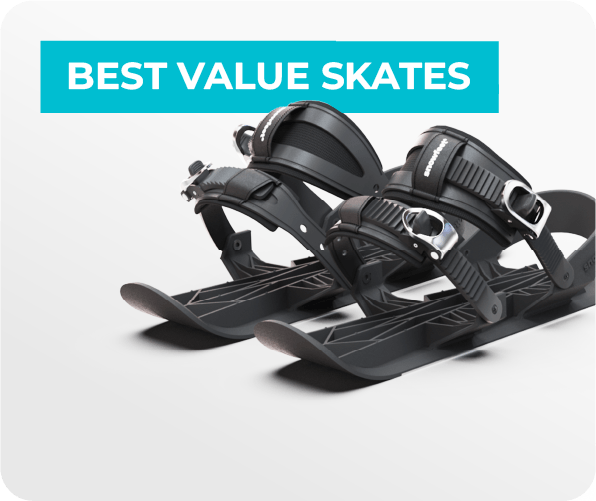



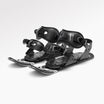
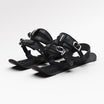
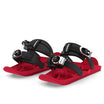
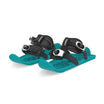

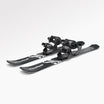

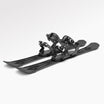
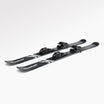






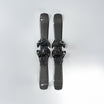
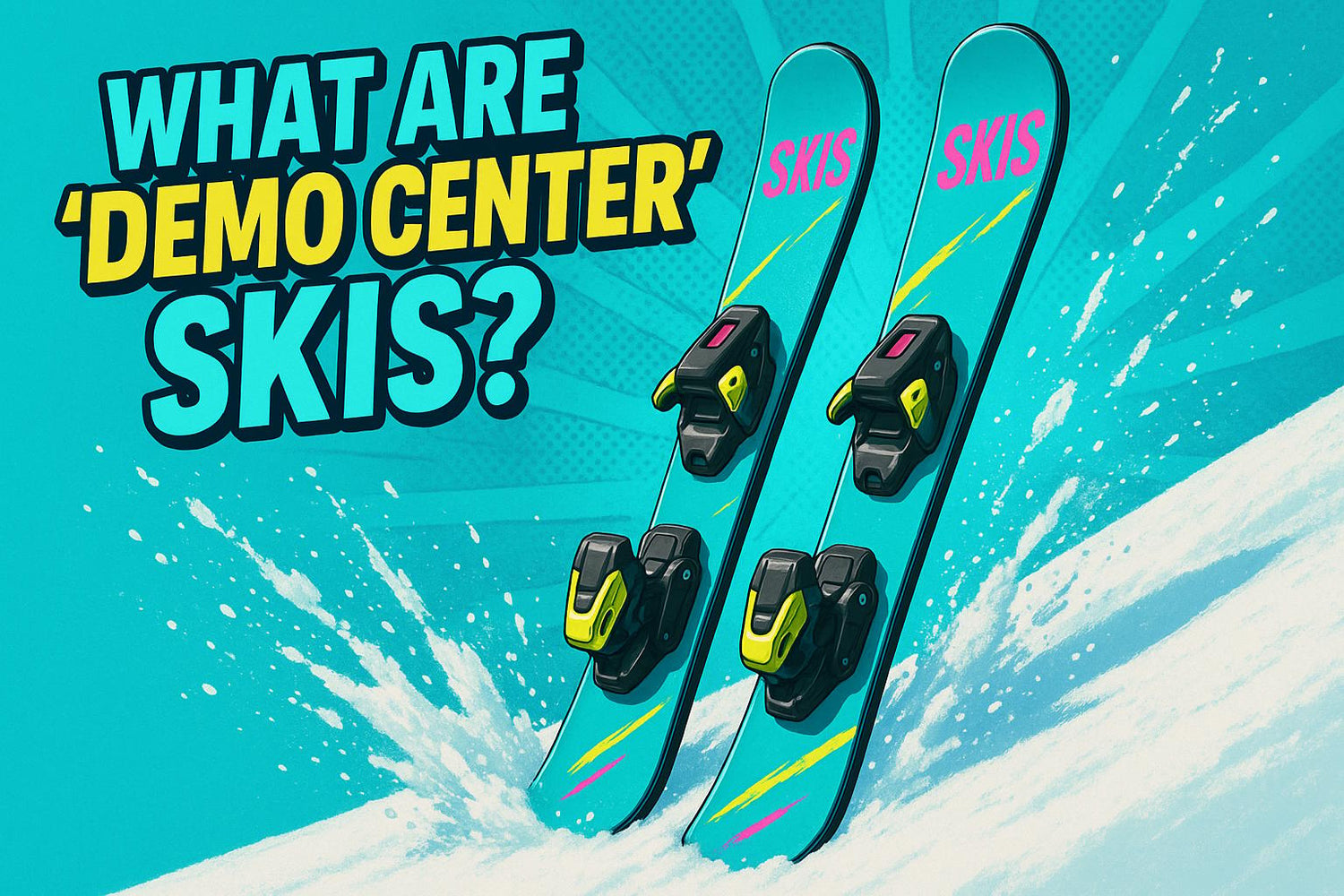
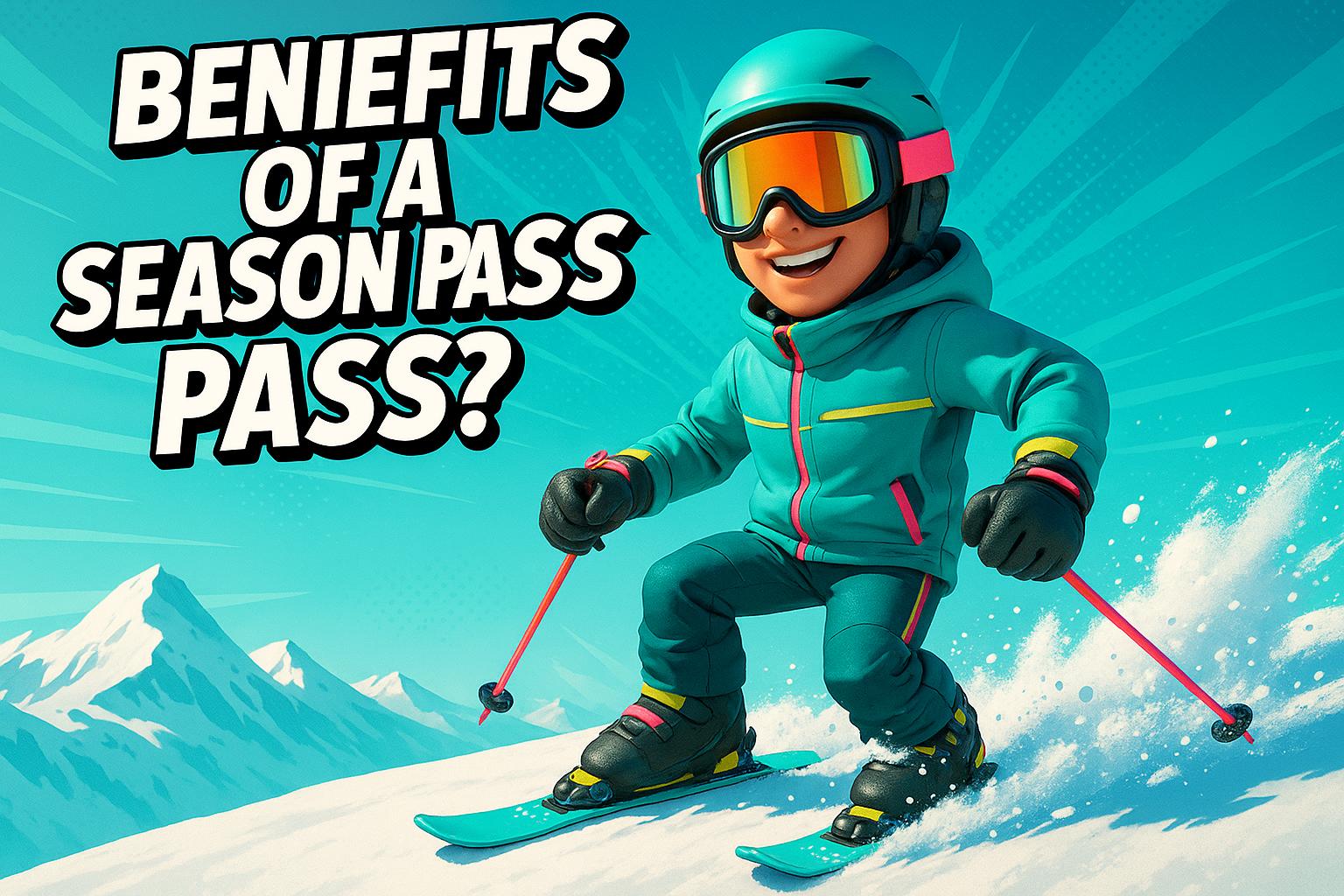
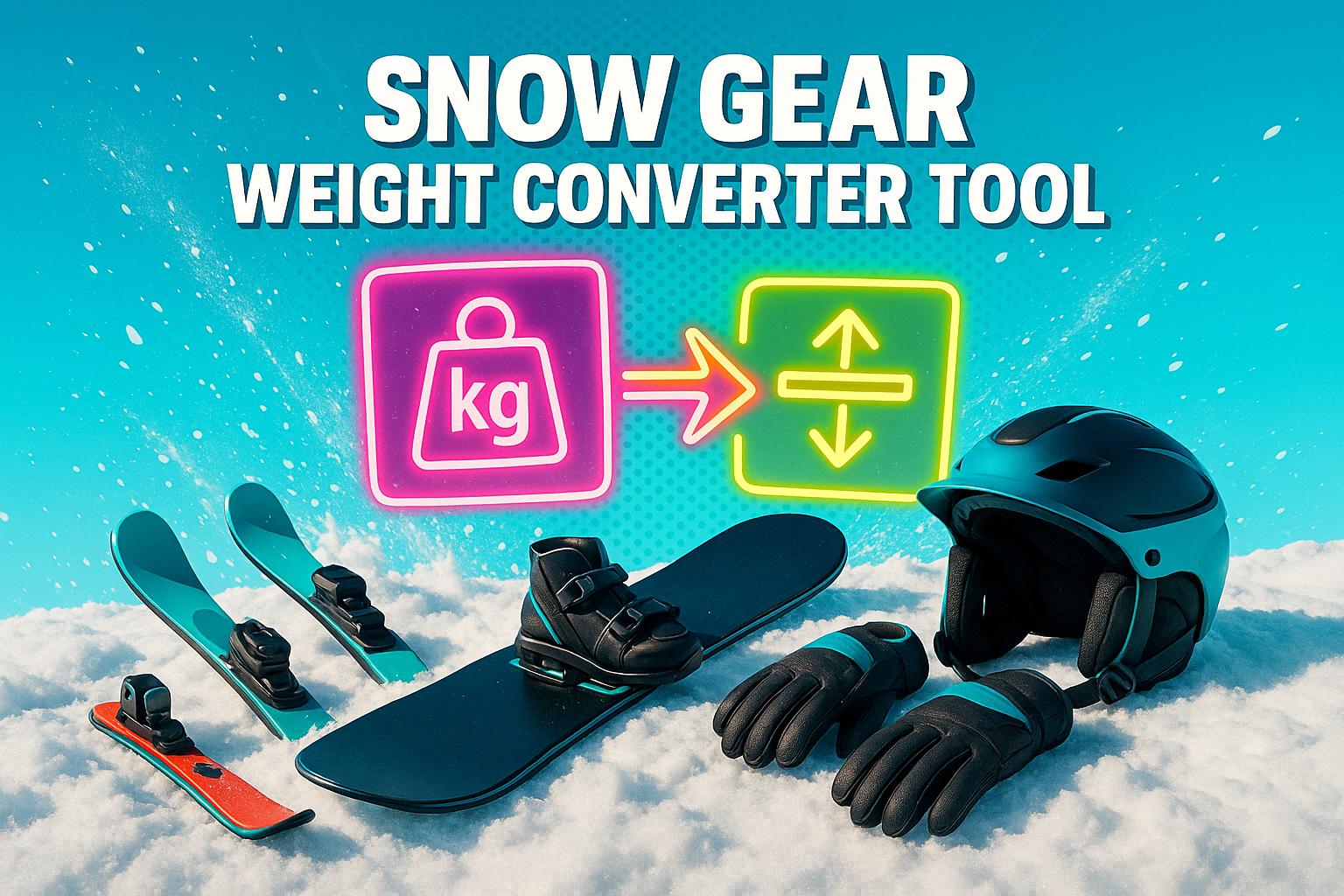
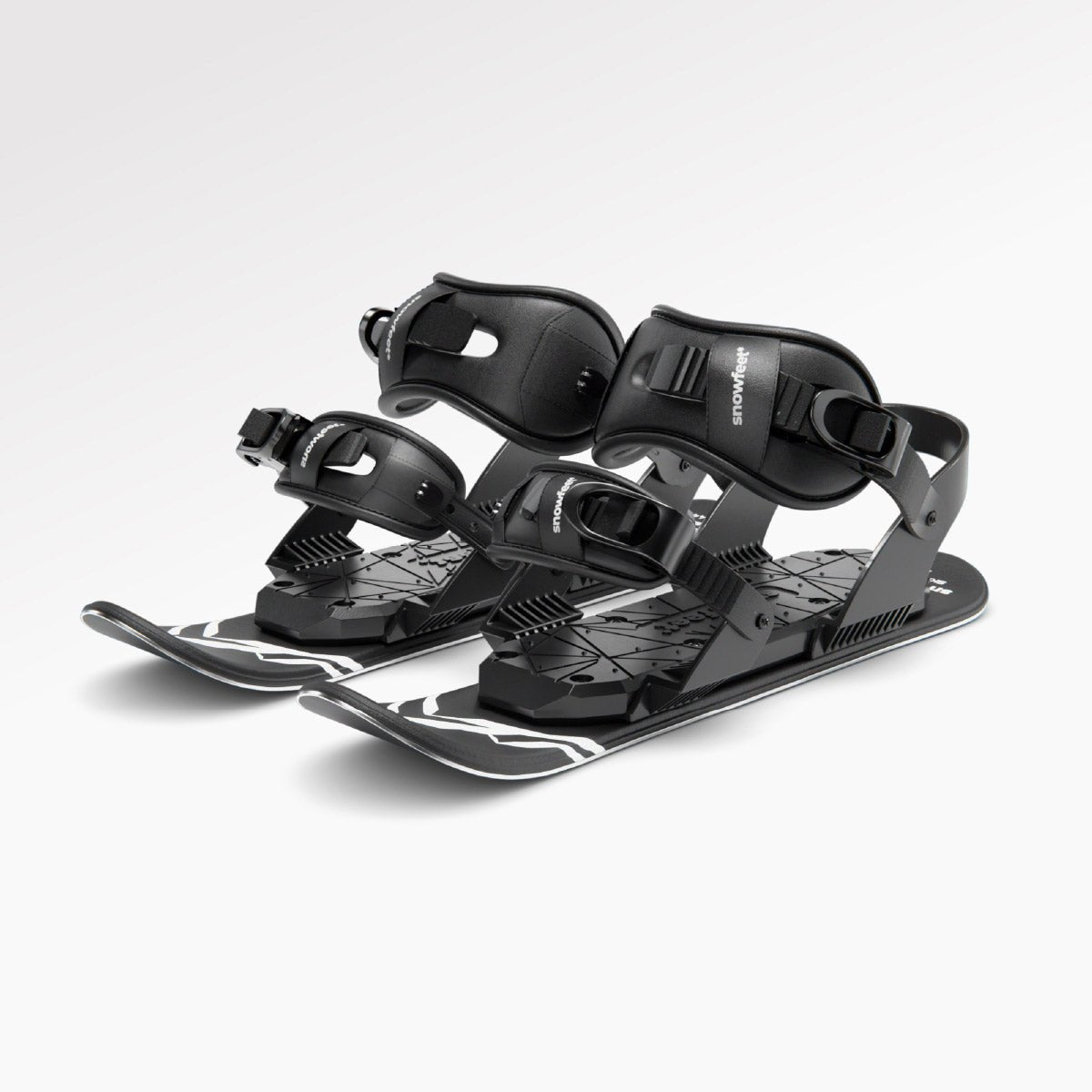
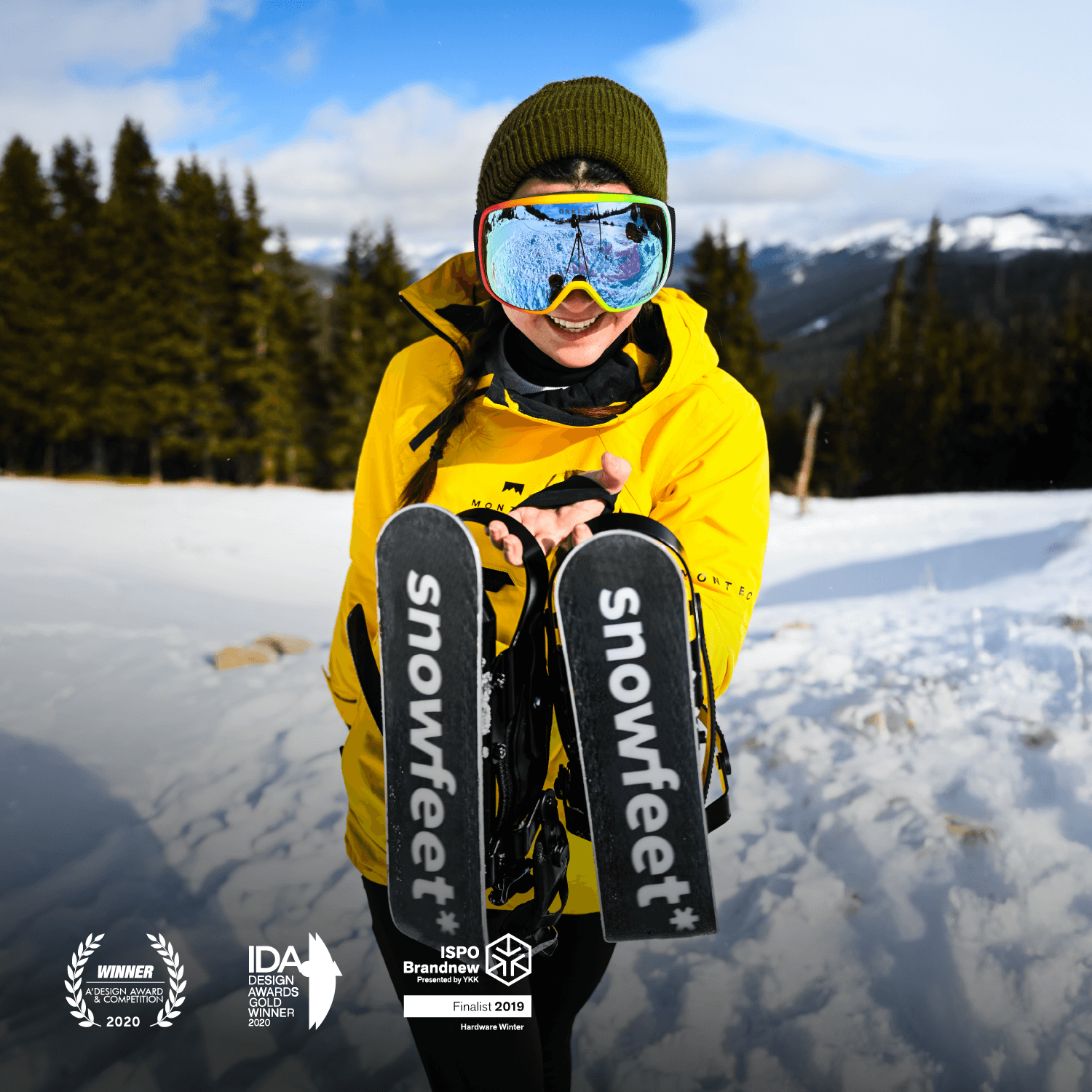
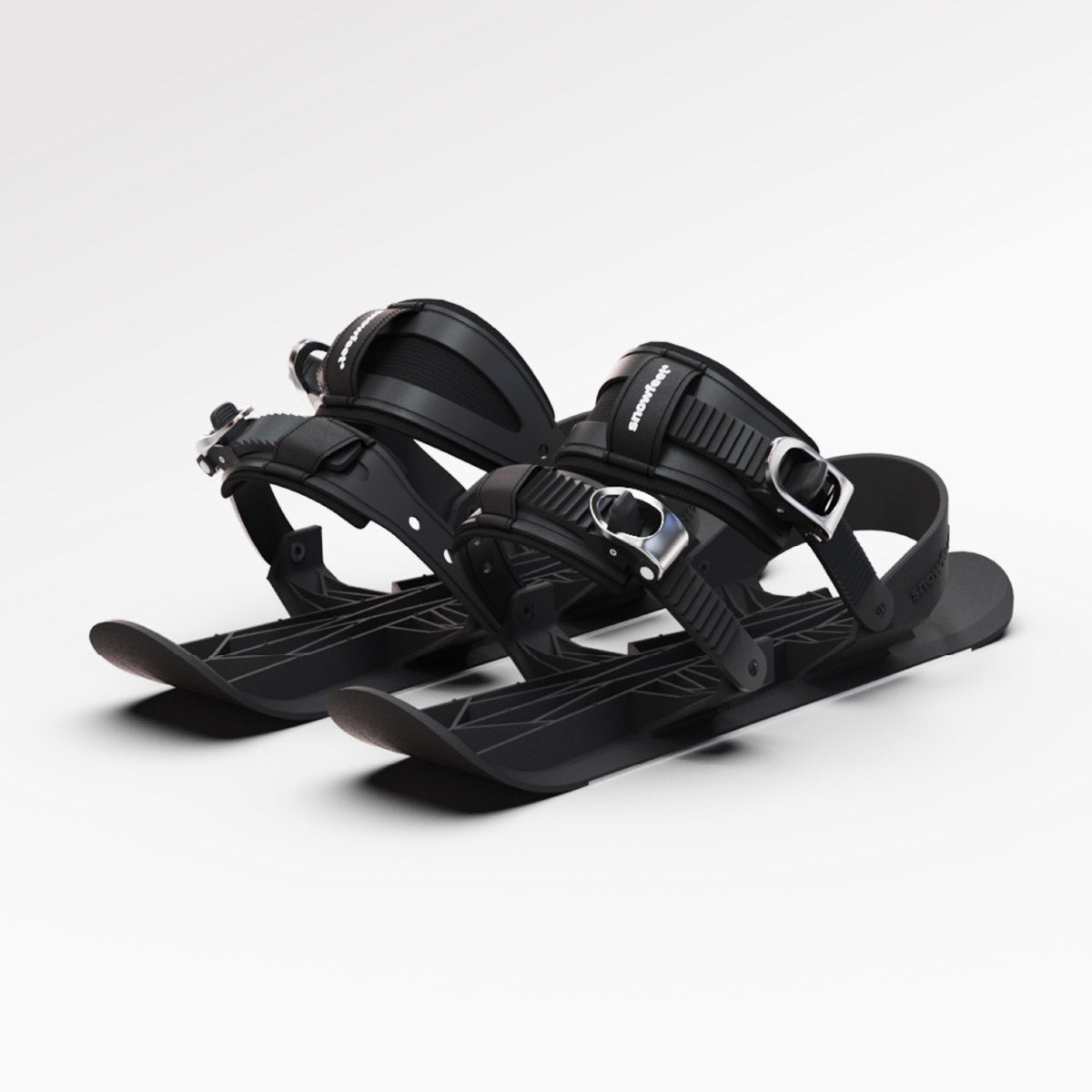

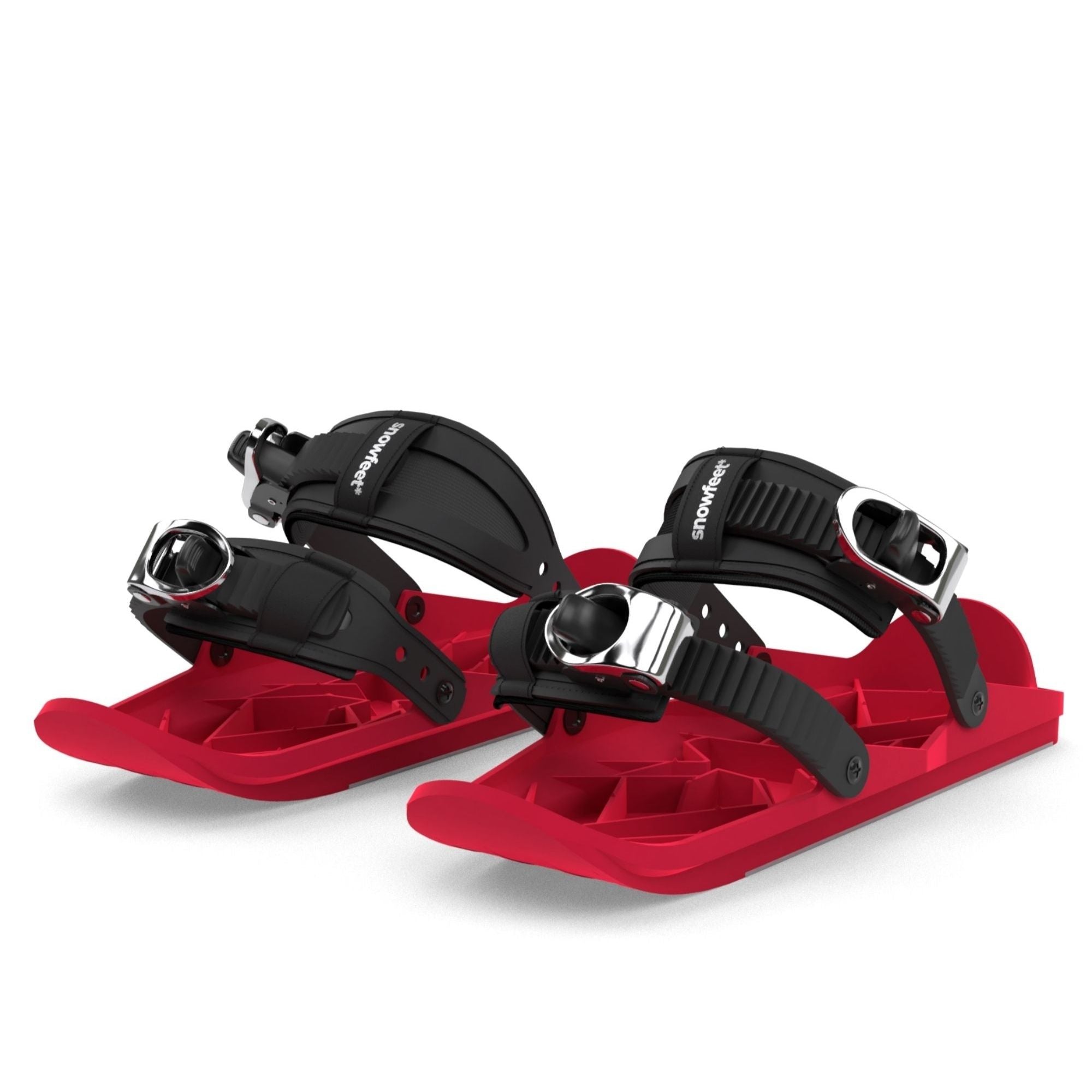
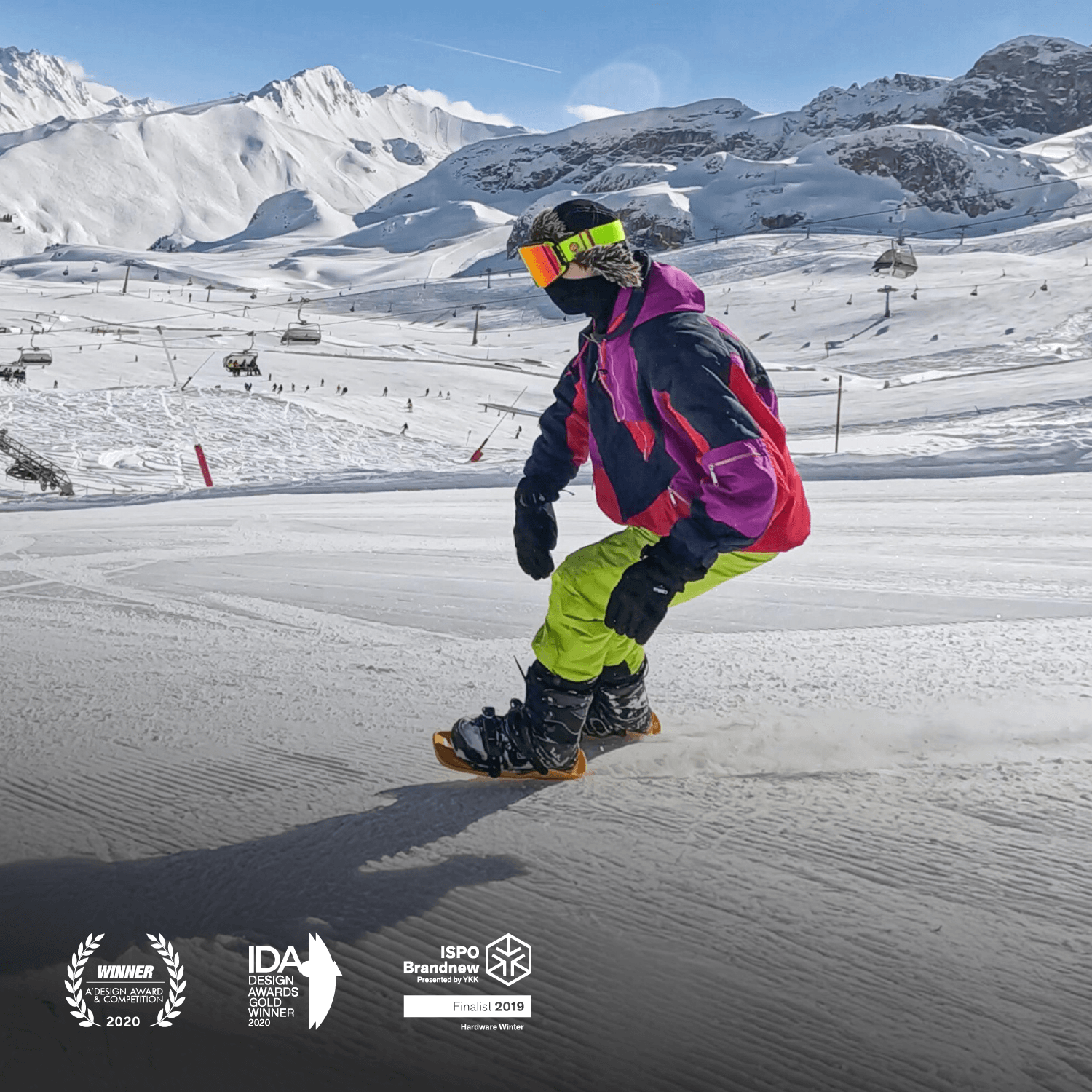


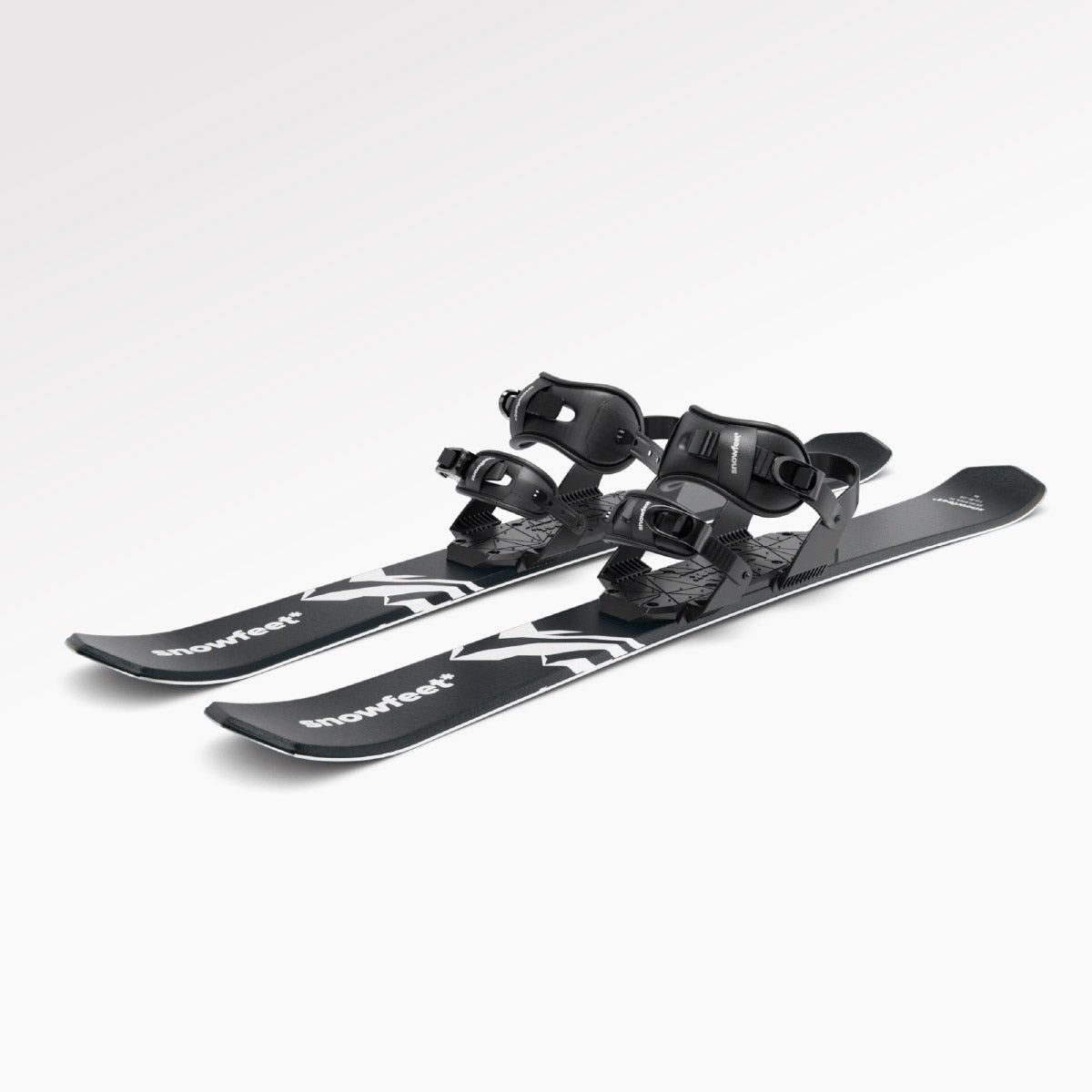
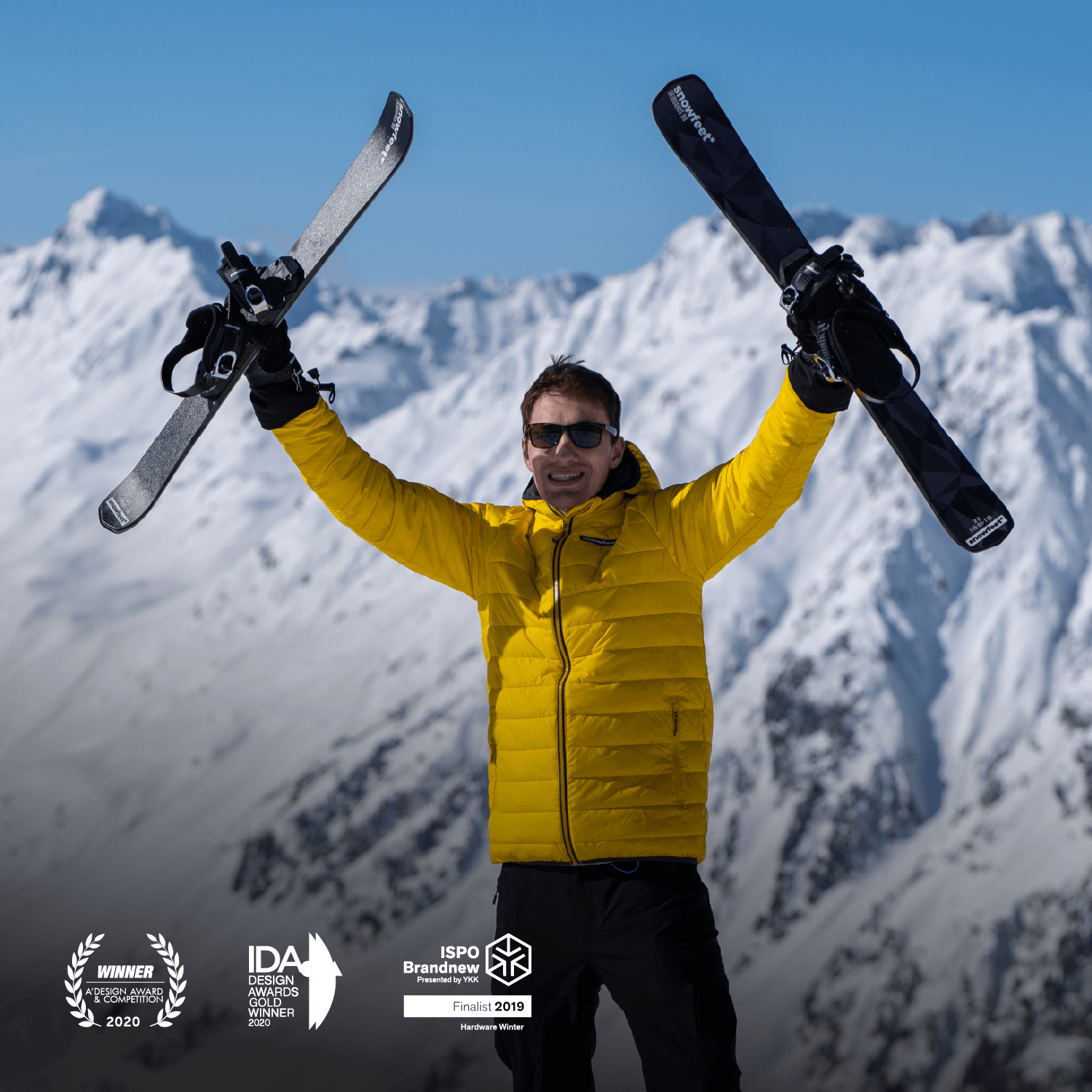
Zanechte komentář
Tento web je chráněn službou hCaptcha a vztahují se na něj Zásady ochrany osobních údajů a Podmínky služby společnosti hCaptcha.